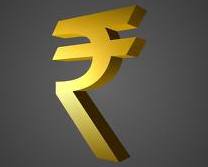In October, 2011 Union government’s announced its plan to borrow Rs53,000 crore more this year—roughly 0.6% of the gross domestic product (GDP). The government said it will borrow an additional Rs. 52,872 crore from the market in the second half, raising its borrowing programme for the fiscal to Rs. 4.7 trillion, the highest ever, and at least 12.5% higher than what was originally envisaged in the budget.
Reasons for high borrowing
Deficit is the small savings scheme : One of the main sources of financing the deficit is the small savings scheme. The government had expected the corpus to be around Rs35,000 crore. Instead, there has been an outflow. This is due to the fact that interest on small savings hovers around 8%, while bank deposits—after successive rounds of interest rate increases—are more attractive now. It need not be reiterated that the Reserve Bank of India had to undertake this painful therapy as the wave of government spending and entitlement programmes unleashed inflationary pressures. In effect, attempts at reining in one problem—of government creation—have led to another.
Lower cash balances : The surplus in the beginning of the year was Rs. 17,000 crore less than expected, and a dip in the available sources of funds prompted the government to lift market borrowings.








